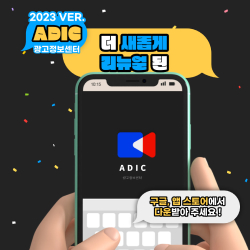- 미디어&마켓 리포트_25년 8월
- [나스미디어]2024년 11월 2025 디지털 미디어 & 마케팅 전망
- 2022 주류 소비 트렌드 리포트
- 2024년 6월 미디어 이슈 리포트
- [인크로스]2025년 1월 미디어 이슈 리포트
- 기아차 SOUL의 혁신적인 제품전략 -소비자의 soul을 움직이다-
- [2025년 7월] 2025 상반기 디지털 미디어 & 마케팅 결산
- [플레이디] 2025 광고·마케팅 트렌드 전망 리포트
- [메조미디어] 2024 업종 분석 리포트 02. 화장품
- [나스미디어] 2024년 11월 Meta 협력광고, 이커머스 시장의 게임 체인저
자료요약
오늘날 전자제품, 자동차, 음악, 영상, 의류, 그림에 이르기까지, 다양한 유무형 제품이 소유(possession)가 아니 구독(subscription)의 형태로 소비되고 있음에도 불구하고, 아직 소비자들의 구독소비의 의사결정에 미치는 효과에 관한 연구가 제한적이다. 구독과 소유의 큰 차이점 중 하나는 ‘이용시간의 한정성’이다. 소유와는 달리, 구독은 제품 이용에 있어서 한정된 시간 기한이 제시된다. 따라서 이용시간에 관한 정보는 소비자가 구독제품을 평가하는데 있어서 중요한 영향을 미칠 수 있다. 이에 본 연구는 구독제품의 이용시간 제시형태에 따라 제품에 대한 선호도의 차이가 발생할 것으로 예상하고, 이를 세 개의 실증연구를 통하여 살펴보았다. 구체적으로, 본 연구는 이용시간의 제시형태를 기간(duration)과 날짜(date)로 구분하여, 각각의 형태에 따라 구독제품에 대한 소비자의 구매의도와 최대지불용의에 차이가 발생하는지를 검증하였고, 이때 시간제시형태의 효과를 설명하는 내재된 기제(underlying mechanism)로서 지각된 시간 길이(perceived temporal length)의 매개적 역할도 살펴보았다. 연구결과, 구독제품의 이용시간이 기간으로 제시되었을 때, 날짜로 제시되었을 때와 비교하여, 제품에 대한 구매의도와 최대지불금액이 높아졌으며, 이는 사람들이 기간일 때 이용시간을 더 길게 지각했기 때문임이 확인되었다. 또한, 본 연구는 시간제시형태의 효과를 조절하는 변수로서 정보처리유형을 제안하였다. 실험 2와 3의 결과를 바탕으로, 감정을 기반으로 정보처리를 하는 경우, 시간제시형태의 효과가 강화되었지만 이성을 근거로 정보처리를 하는 경우에는 그 효과가 약화됨을 확인하였다. 이러한 결과를 기반으로, 학술적, 실무적 의의를 논의하였다.
Nowadays, a wide range of tangible and intangible products, such as electronics, automobiles, music, videos, clothing, and paintings, are consumed in the form of accessibility rather than possession. Despite the continued growth of the subscription market, there has not been much research on factors that influence consumers’ decisions about subscription consumption. One of the major differences between the subscription and possession is the finiteity of the usage period. Thus, the current research considers that the usage period of subscription products plays an important role in evaluating the products. This research investigates whether the preference for subscription products differs depending on how to describe the usage period. Especially, the usage period can be presented as a duration (e.g., 4 weeks, 6 months) or a date (e.g., November 23) form. It is predicted that the preference for subscription products will be higher when the period is presented as a duration form than a date form (H1) and the effect is mediated by perceived time interval (H2). Moreover, the influence of time description on the evaluation of subscription products is stronger (weaker) when on relies on emotion (reason) in decision making (H3). Three experiments supported the hypotheses. Study 1 shows that consumers are more likely to purchase and be willing to pay the rental product when the usage period is described as a duration than a date and this effect is mediated by the perceived temporal length. Furthermore, this research investigates that the proposed time description effect can depend on whether a consumer relies on emotion versus reason in decision making. The results of Studies 2 and 3 indicate that the time presentation effect is enhanced for consumers who rely on emotion whereas for those who rely on reason the effect is attenuated. These contributions carry important implications for understanding the role of usage period descriptions on the decision on subscription products as well as for marketers aimed at nudging consumers to choose their subscription products.
Nowadays, a wide range of tangible and intangible products, such as electronics, automobiles, music, videos, clothing, and paintings, are consumed in the form of accessibility rather than possession. Despite the continued growth of the subscription market, there has not been much research on factors that influence consumers’ decisions about subscription consumption. One of the major differences between the subscription and possession is the finiteity of the usage period. Thus, the current research considers that the usage period of subscription products plays an important role in evaluating the products. This research investigates whether the preference for subscription products differs depending on how to describe the usage period. Especially, the usage period can be presented as a duration (e.g., 4 weeks, 6 months) or a date (e.g., November 23) form. It is predicted that the preference for subscription products will be higher when the period is presented as a duration form than a date form (H1) and the effect is mediated by perceived time interval (H2). Moreover, the influence of time description on the evaluation of subscription products is stronger (weaker) when on relies on emotion (reason) in decision making (H3). Three experiments supported the hypotheses. Study 1 shows that consumers are more likely to purchase and be willing to pay the rental product when the usage period is described as a duration than a date and this effect is mediated by the perceived temporal length. Furthermore, this research investigates that the proposed time description effect can depend on whether a consumer relies on emotion versus reason in decision making. The results of Studies 2 and 3 indicate that the time presentation effect is enhanced for consumers who rely on emotion whereas for those who rely on reason the effect is attenuated. These contributions carry important implications for understanding the role of usage period descriptions on the decision on subscription products as well as for marketers aimed at nudging consumers to choose their subscription products.
목차
ABSTRACT
Ⅰ. 서론
Ⅱ. 이론적 배경 및 가설
Ⅲ. 실험 1
Ⅳ. 실험 2
Ⅴ. 실험 3
Ⅵ. 결론 및 논의
참고문헌
Ⅰ. 서론
Ⅱ. 이론적 배경 및 가설
Ⅲ. 실험 1
Ⅳ. 실험 2
Ⅴ. 실험 3
Ⅵ. 결론 및 논의
참고문헌
#구독
#시간제시형태
#프레이밍 효과
#지각된 시간
#정보처리유형
#제품의 이용시간
#Subscription
#Time Description
#Framing Effect
#Time Perception
#Reliance on EmotionVersus Reason in Decision Making
#Usage Time











